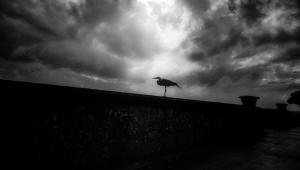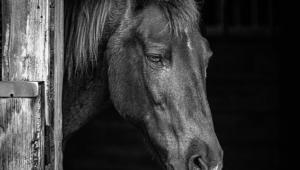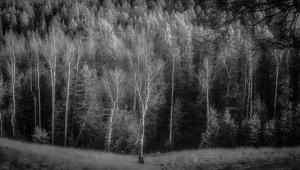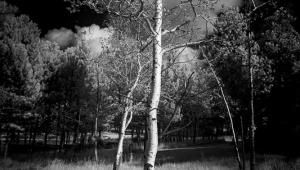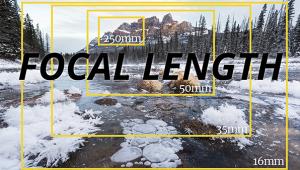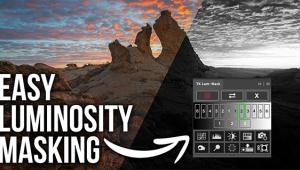Digital Help
Q&A For Digital Photography Page 2
Printing B&W Photos With A Color Ink Jet--A Perrenial Problem
Q. Thank you for an interesting and informative department each month. Perhaps
you can give me some advice on two related printer questions. The first: How
can I get a good neutral black when printing black and white on my Epson 1280
on Epson Premium Glossy Photo paper? My black and white photos often have a
slight magenta hue in the dark, black areas (not fringing, the whole black area
is slightly magenta). This does not appear to be an overall color shift, it
seems limited to very dark areas only. I have tried converting color photos
to black and white by using the gray scale in Photoshop and printing with only
black ink, which produces neutral blacks but rather flat-looking photos. I have
also tried desaturating a color photo using Hue/Saturation in Photoshop and
printing it as a color photo. This produces a better looking photo, but contains
the slight black pollution. I find using the Hue/Saturation set to only 5 percent
saturation gives an interesting black and white image which most people like,
but is not true black and white. It does sort of hide the pollution, though.
I have also tried adjusting the magenta setting in the printer software downward
a little. This reduces the effect, but also gives a slight greenish tinge to
other dark, but not black, parts of the print. If I turn the auto color control
in the printer software off, the print will be decidedly greenish. While I imagine
that the effect is present in color photos, it is too small to be noticeable.
Second question: What is the best way to make black and white prints up to 13x19"?
Is there a newer printer that does a better job on black and white--maybe
a 2200? Or, how about using one of those third-party black and white ink sets
that only print black and white and dedicate this printer to black and white
and buy another one for color? I would appreciate any guidance you might have
to offer on these topics.
James Charlton
A. The problem with trying to make neutral-toned black and
white photo prints with a six-color ink jet printer you described is pretty
universal. It is due to the fact the printers are mass-produced consumer products
and obtaining an exact balance of six colors of ink to produce neutral blacks
and grays is like trying to balance a cue ball on the tip of a pool cue, or
better, balance a marble on the point of a pin. It is as much due to the fact
the inks are not 100 percent exact in density as it is a mechanical problem
beyond the printer's precision.
The Epson Stylus Pro 4000 printer is better, and should be with a price of $1800,
but it still is not a really good solution because pigment ink prints made with
colored inks are subject to metamerism--they shift in tonal color quite
obviously as the color temperature of the light illuminating the print changes.
This problem also applies to the Epson Stylus Photo 2200.
The best solution for printing black and white photographs with an ink jet is
to convert an ink jet printer to use all-black ink. I recently finished my second
article on this subject which appears in the February 2005 issue of Shutterbug
on page 44 (you can also find this article on our website at: www.shutterbug.com).
It covers a number of simple to sophisticated black and white printing options.
You can get a bit of an idea of what is involved and available at the MIS Associates
website at: www.inksupply.com.
Personally I have converted a "retired" Epson Stylus Photo 2000P
to use all-black ink and am very satisfied with the results.
Can "Digital" SLR Lenses Be Used With 35mm Film Cameras?
Q. I'm interested in buying both the Nikon FM3A and the D70. My question:
Is the D70 kit lens--the AF-S 18-70mm f/3.5-4.5G ED-IF DX Zoom Nikkor--compatible
with the FM3A? I'd read on another website that it is compatible with
AF-S Nikkor lenses.
Azha
A. The Nikkor AF-S 18-70mm DX Zoom lens is not compatible with the FM3A 35mm film camera. DX lenses are only compatible with Nikon D digital cameras. Essentially the same is true with other camera brands of "digital" SLR lenses made for "APS format" digital SLRs; they do not have the area coverage for use with a full-frame 35mm film SLR and are thus not compatible.
How To Convert Digital Camera Raw Files
Q. I am about to go digital and I just re-read your article concerning the SilverFast
raw converter. This article was written before Photoshop CS. Would you still
recommend SilverFast DC Pro over the controls within Photoshop?
Judy Grose
A. Since the report you cited I have had numerous occasions
to compare results converting digital camera raw files using both the Camera
Raw utility provided by Adobe in Photoshop CS and now also in Photoshop Elements
3.0, with LaserSoft SilverFast DC Pro. My opinion based on the results of that
comparison is that LaserSoft SilverFast DC Pro provides the possibility of obtaining
a much cleaner, more accurate interpretation of the subject in color as well
as better control of sharpness and both global and local contrast than can be
achieved with Photoshop's Camera Raw.
Whether SilverFast DC Pro is worth the extra investment depends on how demanding
a photographer is in expecting precise and accurate color reproduction with
high fidelity to the subject. Personally, I find SilverFast DC Pro worthwhile,
but I am sure many others will be satisfied with Photoshop's Camera Raw
as good enough; but to me it is the difference between acceptable and excellent,
and I prefer excellence.
Dealing With Making Scanners & Printers Work After A System Upgrade
Q. I have a couple of questions re: my transition from Windows 98 to XP. It
has been a rough transition for me to get everything up and running on this
new OS and I keep finding my options seem to be much more limiting with XP.
My previous CD burning software (Roxio) had the option of choosing your own
burn speeds. Many computer tech people have told me over the years to burn image
files using slow burn speeds for more permanence. My current software for my
CD/DVD burner (Sonic's RecordNow Version 7) which was bundled with my
Dell does not have the option of choosing a burn speed, instead the software
chooses for you.
Do you think this idea of burning at slower speeds still holds true with the
newer burners, both CD and DVD or do you believe the software I have now will
be sufficient? I could opt for a more advanced version which would give me this
choice, but do you think it is necessary with the new burners?
My other question pertains to my CanoScan FS 2710 35mm film scanner. It uses
a SCSI connection and before I tried to install the old SCSI card into my new
computer I called Canon and they told me that this particular scanner is not
compatible with Windows XP. Another bummer. Do you believe this to be true?
I have already told you about my frustration with the newer printer drivers
for my Epson 1280. There is no choice available for selection of printer resolution
with the paper I use most, ColorLife Photo Paper. "Best Photo" is
the only choice which prints at 2880dpi. I believe the reason Epson did this
was to make more money on purchases of ink jet cartridges as the 2880 setting
sucks up the most ink. Just my opinion.
Carl
A. When I first began burning CDs I employed a similarly conservative
strategy, and I believe for good reason. However, both CD-R blank and recorder
quality has been constantly improved, and I now burn CD-Rs at default speed
with no problems. However, I do take pains to purchase only the best quality
CD-R blank discs that are available. That strategy has for several years provided
100 percent reliability.
Regarding your Canon CanoScan FS 2710, I would suggest looking into obtaining
a VueScan driver for the scanner. VueScan can at least provide the ability to
run the scanner and scan to high-bit raw files, which you can then color correct
and adjust in Photoshop. You can check it out and download the software from
their website at: www.hamrick.com.
I would disagree with your assumption that Epson's strategy with ColorLife
paper requiring 2880dpi resolution has anything to do with ink usage, as the
difference in ink used between resolutions is negligible and has to do more
with image quality and longevity, considering that one reason for promoting
the paper is longer life based on tests by Wilhelm-Imaging Research. If at a
higher resolution the printer used a significantly greater amount of ink, then
the resulting print image would be much, much darker.
- Log in or register to post comments













